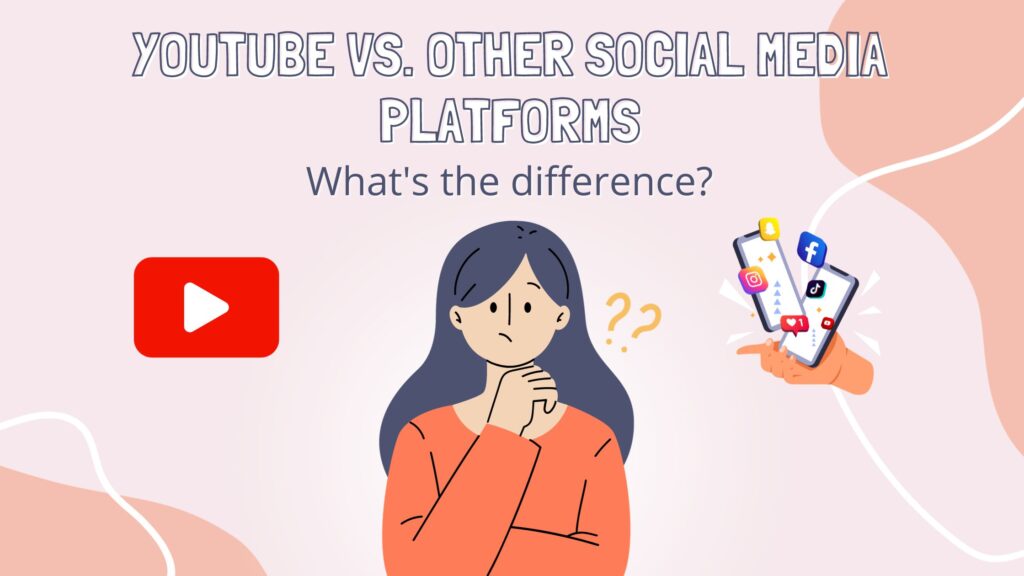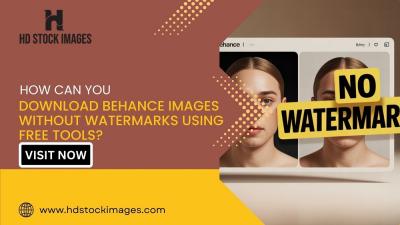YouTube has evolved beyond a simple video-sharing site; it’s a vibrant social media platform that connects millions of users globally. With its ability to share, comment, and engage, YouTube has transformed how we consume content and interact with creators. Whether you’re watching vlogs, tutorials, or music videos, the platform encourages communication and community building. So, is
The Definition of Social Media

To understand YouTube's role, we first need to grasp what social media really is. Social media refers to digital platforms that enable users to create, share, and exchange content and ideas. At its core, social media fosters interaction, community, and collaboration among users. Here are some key characteristics that define social media:
- User-Generated Content: Platforms allow users to create, upload, and share their own content, from text posts to videos and images.
- Interactivity: Users can engage with content through likes, comments, shares, and reactions, fostering a sense of community.
- Networking: Social media connects people, allowing them to follow, interact, and communicate with others who share similar interests.
- Real-Time Communication: Conversations happen in real-time, making it easy to connect and collaborate instantly.
Consider popular platforms like Facebook, Twitter, and Instagram. They all facilitate interaction through posts, comments, and shares. But how does YouTube stack up? It meets the social media criteria quite well:
- Content Creation: Anyone can create a YouTube channel and upload videos, turning everyday users into potential influencers.
- Comments and Engagement: Viewers can leave comments, like, or dislike videos, and even engage in discussions, creating a community around content.
- Subscriptions: Users follow channels to receive updates, allowing creators to build a loyal audience.
- Live Streaming: YouTube’s live streaming feature enables real-time interaction, enhancing the communication experience.
In essence, social media is about building connections and sharing experiences. YouTube embodies these principles, making it a powerful tool for communication and community engagement. As we continue to explore its role, it’s clear that YouTube isn’t just a video platform; it’s a bustling social hub. So, what do you think? Is
Also Read This: How to Access Unlisted YouTube Videos Without a Link
3. YouTube's Unique Features

YouTube isn't just a platform for uploading and sharing videos; it’s evolved into a multifaceted hub that stands out in the social media landscape. Here are some of its unique features that contribute to its appeal:
- Video Content Variety: From DIY tutorials and vlogs to music videos and documentaries, YouTube hosts a diverse range of content. This variety ensures that there’s something for everyone, making it a go-to platform for entertainment and education.
- Monetization Options: YouTube offers creators various ways to monetize their content, including ad revenue, channel memberships, and merchandise shelf options. This encourages creators to produce high-quality content, knowing they can earn from their efforts.
- Community Building Tools: Features like comments, likes, and shares enable creators to build a community around their content. Creators can engage with their audience directly, fostering a sense of belonging and loyalty.
- YouTube Live: The live streaming feature allows creators to broadcast events in real-time, enhancing engagement. Viewers can interact with the streamer through live chat, making it a dynamic platform for real-time communication.
- Algorithm-Driven Recommendations: YouTube’s powerful recommendation algorithm helps users discover new content tailored to their interests. This not only keeps users engaged but also promotes lesser-known creators, giving them a chance to shine.
- Playback Options: Features like variable playback speed, closed captions, and the ability to create playlists enhance user experience, allowing viewers to consume content in ways that suit their preferences.
These features not only make YouTube an attractive platform for users but also contribute to its role as an evolving social media landscape. The way it combines entertainment, community, and commerce sets it apart from other platforms.
Also Read This: How to Listen to YouTube with Screen Off on Your Mobile Device
4. The Role of User Interaction on YouTube
User interaction on YouTube is crucial to its success as a social media platform. The way users engage with content has a ripple effect, influencing trends, content creation, and even the platform's algorithms. Here’s how interaction plays a key role:
- Comments Section: The comments section is a vibrant space where viewers can share their thoughts, ask questions, and interact with both creators and other viewers. This interaction fosters community and can turn a simple video into a conversation starter.
- Engagement Metrics: Likes, shares, and subscriptions are vital metrics that affect how content is promoted on the platform. Higher engagement typically means that the video will be recommended to more viewers, creating a cycle of visibility and interaction.
- Fan Interaction: Many creators actively respond to comments, host Q&A sessions, and even incorporate fan suggestions into their videos. This direct interaction not only enhances viewer loyalty but also makes fans feel valued and heard.
- Collaborative Content: YouTube encourages collaboration among creators, allowing them to engage with each other’s audiences. This cross-pollination of viewer bases can lead to explosive growth for both parties involved.
- Community Posts: Beyond video content, YouTube allows creators to post updates, polls, and images in the community tab. This feature helps creators maintain engagement and keep their audience informed about upcoming content or events.
In essence, user interaction on YouTube transforms it from a mere video-sharing platform into a vibrant community that thrives on sharing ideas, creativity, and connection. This interaction not only enriches the user experience but also shapes the future of content creation on the platform.
Also Read This: Which YouTube Channel Offers Everything You Need to Learn About Taekwondo?
5. Comparing YouTube with Other Social Media Platforms
When we think about social media, platforms like Facebook, Twitter, and Instagram often come to mind first. However, YouTube, while primarily a video-sharing site, operates as a social media platform in many ways. Let’s dive into how YouTube compares to these more traditional social media sites.
Content Formats: One of the most significant differences is in content format. YouTube is predominantly video-based, allowing users to share, comment on, and engage with long-form video content. In contrast, platforms like Twitter focus on short text updates, while Instagram emphasizes images and stories. This difference shapes how users interact:
- YouTube: Long-form tutorials, vlogs, music videos.
- Facebook: Status updates, photos, event sharing.
- Instagram: Image posts, reels, stories.
- Twitter: Brief text updates, trending topics.
User Engagement: Engagement on YouTube often comes in the form of comments, likes, and shares, much like other platforms. However, the depth of engagement can be different:
- YouTube: Deep discussions in comments, community posts, video responses.
- Facebook: Group discussions, comment threads.
- Instagram: Comments on photos, direct messages.
- Twitter: Retweets, replies, hashtag conversations.
Audience Reach: YouTube has a unique advantage when it comes to reach. With over 2 billion logged-in monthly users, it offers creators access to a vast audience. In comparison:
- Facebook: Over 2.9 billion monthly active users, but often cluttered with competing content.
- Instagram: Approximately 1.4 billion users, heavily visual, but limited to quick consumption.
- Twitter: About 450 million users, fast-paced and fleeting content.
In essence, while YouTube has its own unique features and challenges, it stands shoulder to shoulder with other social media giants. It’s not just about video; it’s about connection, community, and communication, which are at the heart of all social media platforms.
Also Read This: Why Do I Keep Getting Signed Out of YouTube? Fixing Common Issues
6. The Impact of YouTube on Online Communication
YouTube has transformed the way we communicate online, introducing new dynamics in how information is shared and consumed. Its impact extends beyond just entertainment; it has become a powerful tool for education, activism, and community building.
Educational Resource: One of the most profound impacts of YouTube is its role as an educational resource. Channels dedicated to science, history, and technology have made learning accessible to millions. For instance, channels like Khan Academy and CrashCourse have provided free educational content to students worldwide. This democratization of information allows anyone with an internet connection to access quality content.
Activism and Awareness: YouTube has also become a platform for activism. Movements like Black Lives Matter and climate change activism have found a voice through viral videos. Documentaries and personal stories shared on YouTube can raise awareness and drive social change, proving that video can be a potent medium for advocacy.
Community Building: Beyond individual videos, YouTube fosters a sense of community. Creators often establish a connection with their audiences through vlogs, live streams, and engaging comment sections. For example, popular creators like Emma Chamberlain and PewDiePie have built loyal fan bases who feel personally connected to their journeys.
Influencing Communication Styles: YouTube has altered communication styles, too. The platform encourages a conversational tone, which often translates into how users communicate across other platforms. The informal, relatable style of YouTube videos has influenced tweets, Instagram captions, and even professional presentations.
In conclusion, YouTube’s impact on online communication is profound and multifaceted. It has changed how we educate, advocate, and connect with one another, making it an integral part of our digital landscape.
Also Read This: How to Delete YouTube from Smart TV and Remove the App Completely
7. Challenges and Limitations of YouTube as a Social Media Platform
While YouTube has certainly carved a niche as a prominent social media platform, it faces several challenges and limitations that can hinder its effectiveness as a space for online communication. Let’s dive into some of the key issues:
- Content Moderation: One of the biggest challenges for YouTube is content moderation. With millions of videos uploaded daily, ensuring that harmful or inappropriate content is flagged and removed in a timely manner is daunting. This sometimes leads to criticism over perceived censorship or, conversely, a failure to act against hate speech or misinformation.
- Algorithm Bias: YouTube’s recommendation algorithm can create echo chambers. Users often find themselves stuck in a loop of similar content, which can limit exposure to diverse perspectives. This can foster polarization as viewers may only engage with ideas that reinforce their own.
- Monetization Issues: For content creators, monetization can be a double-edged sword. While many creators thrive, others struggle to meet the requirements for monetization or face demonetization unexpectedly. This inconsistency can discourage creativity and lead to frustration among creators.
- Lack of Privacy: The platform’s handling of user data raises privacy concerns. With algorithms that track user behavior to suggest content, some users feel uneasy about the amount of personal data being collected and used to tailor their experience.
- Influencer Saturation: As YouTube grows, so does the competition. It’s becoming increasingly difficult for new creators to gain visibility amidst a plethora of established influencers. This saturation can lead to a sense of inadequacy among newer creators, who may feel their voice isn’t being heard.
These challenges, while significant, are not insurmountable. YouTube has been making efforts to address these issues through updates and community guidelines, but the road ahead requires ongoing vigilance and adaptation. As users and creators engage with the platform, a collective push for improvement can help shape a more inclusive and balanced YouTube experience.
8. Conclusion: The Future of YouTube in Social Media
The future of YouTube as a social media platform is both exciting and uncertain. As we look ahead, several trends and developments could significantly shape its role in online communication:
- Enhanced Community Engagement: YouTube is taking steps to foster community through features like live streaming and community posts. These tools allow creators to interact with their audience in real-time, building stronger connections.
- Focus on Short-Form Content: With the rise of platforms like TikTok, YouTube has introduced features like YouTube Shorts. This shift towards shorter video formats caters to changing viewer preferences and could draw in a younger audience.
- Improved Monetization Models: As competition intensifies, YouTube may need to innovate its monetization strategies. Offering more flexible revenue options could attract a wider range of creators and enhance the quality of content.
- Greater Emphasis on Mental Health: Addressing the mental health of both creators and users is becoming increasingly important. YouTube could prioritize well-being by promoting content that encourages positive communication and reducing harmful interactions.
- Collaboration with Other Platforms: YouTube may explore partnerships with other social media platforms to create an interconnected ecosystem that enhances user experience across platforms.
In conclusion, while YouTube has its challenges, its potential for growth and adaptation in the realm of social media is vast. As viewers continue to seek authentic content and meaningful connections, the platform's ability to evolve with these needs will determine its relevance in the digital landscape of tomorrow.
 admin
admin








